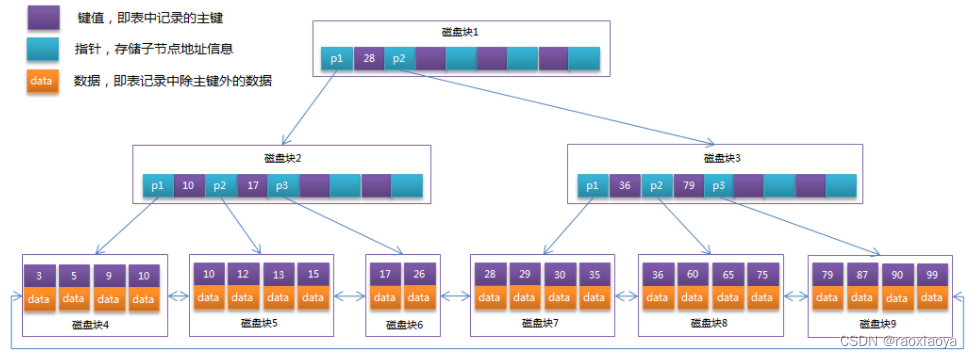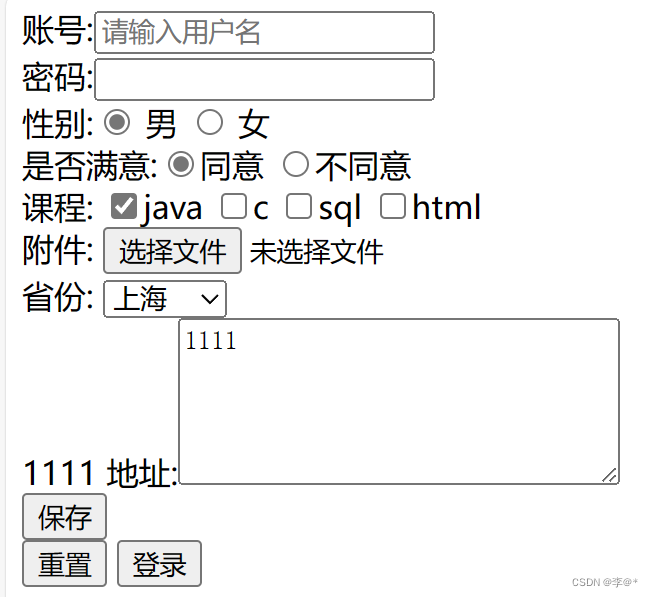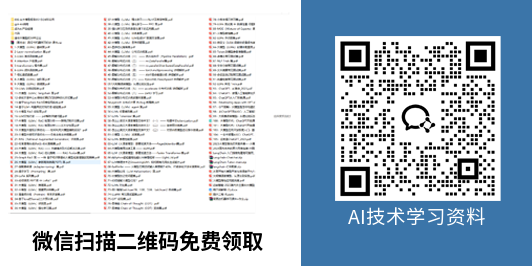1.相交链表
- 解题思路
快慢指针:分别求出两个链表的长度n1和n2,在长度较长的那个链表上,快指针先走n2 - n1,慢指针再出发,最后能相遇则链表相交
时间复杂度O(m+n),空间复杂度O(1) - 代码
# Definition for singly-linked list. # class ListNode: # def __init__(self, x): # self.val = x # self.next = None class Solution: def getIntersectionNode(self, headA: ListNode, headB: ListNode) -> Optional[ListNode]: if not headA or not headB: return None l_a = 0 l_b = 0 node = headA while node: l_a += 1 node = node.next node = headB while node: l_b += 1 node = node.next node1 = headA node2 = headB if l_b > l_a: l_a, l_b = l_b, l_a node1, node2, = node2, node1 for _ in range(l_a - l_b): node1 = node1.next while node1 and node2: if node1 == node2: return node1 node1 = node1.next node2 = node2.next return None
2.翻转链表
- 解题思路
最基本的题目,一定要掌握。prev初始化成None,不需要dummy_head
时间复杂度O(N),空间复杂度O(1) - 代码
class Solution: def reverseList(self, head: Optional[ListNode]) -> Optional[ListNode]: if not head: return head # prev直接初始化成None就好 prev = None cur = head nex = None while cur: nex = cur.next cur.next = prev prev = cur cur = nex return prev
3.回文链表
- 解题思路
查找中间链表,然后翻转后半段,接着使用双指针比较判断即可
时间复杂度O(N),空间复杂度O(1) - 代码
# Definition for singly-linked list. # class ListNode: # def __init__(self, val=0, next=None): # self.val = val # self.next = next class Solution: def isPalindrome(self, head: Optional[ListNode]) -> bool: def reverse(head): if not head: return head prev = None cur = head nex = None while cur: nex = cur.next cur.next = prev prev = cur cur = nex return prev if not head: return False if not head.next: return True slow = head fast = head.next while fast and fast.next: slow = slow.next fast = fast.next.next head2 = reverse(slow.next) node_1 = head node_2 = head2 while node_1 and node_2: if node_1.val != node_2.val: return False node_1 = node_1.next node_2 = node_2.next return True
4. 环形链表
- 题目描述
判断链表是否有环 - 解题思路
快慢指针,快指针一次走一步,慢指针一次走两步,如果有环的话,他们一定在环中相遇。类比于操场跑圈的套圈,对于slow来说,fast是一个节点一个节点的靠近slow的
时间复杂度:O(N),
空间复杂度:O(1)。 - 代码
class Solution: def hasCycle(self, head: Optional[ListNode]) -> bool: if not head or not head.next: return False fast = slow = head while fast and fast.next: slow = slow.next fast = fast.next.next if slow == fast: return True return False
5. 环形链表2
- 题目描述
如果链表有环需要返回入环的节点,无环返回None - 解题思路
图片来自代码随想录;查找是否有环和上一题目一样,使用快慢指针,如果有环,那么他们一定在环内相遇。如下图所示,慢指针走过的路程是x + y,快指针走过的路程是 x + y + (y + z) * n,又因为快指针走的路程是慢指针的两倍,因此有x + y + (y + z) * n = 2* (x + y), 也就是(y + z) * n = x + y, 也就是(y+z)*(n-1) + z = x,那么如果两个节点分别从头结点和相遇节点出发,一定可以在入口节点处相遇;
时间复杂度:O(N),
空间复杂度:O(1)。
- 代码
class Solution: def detectCycle(self, head: Optional[ListNode]) -> Optional[ListNode]: if not head or not head.next: return None slow = fast = head has_cycle = False while fast and fast.next: slow = slow.next fast = fast.next.next if fast == slow: has_cycle = True break if not has_cycle: return None node1 = head node2 = slow while node1 != node2: node1 = node1.next node2 = node2.next return node1
6. 合并两个有序链表
- 解题思路
是链表排序和合并K个有序链表等题目要用的基本模块
时间复杂度O(n+m), 空间复杂度O(n+m) - 代码
# Definition for singly-linked list. # class ListNode: # def __init__(self, val=0, next=None): # self.val = val # self.next = next class Solution: def mergeTwoLists(self, list1: Optional[ListNode], list2: Optional[ListNode]) -> Optional[ListNode]: if not list1: return list2 if not list2: return list1 head = ListNode() cur = head node1 = list1 node2 = list2 while node1 and node2: if node1.val < node2.val: cur.next = node1 node1 = node1.next else: cur.next = node2 node2 = node2.next cur = cur.next if node1: cur.next = node1 if node2: cur.next = node2 return head.next
7. 两数相加
-
题目描述

-
解题思路
注意考虑进位、两个数字位数不同的情况
时间复杂度:O(max(m,n)),其中 m 和 n 分别为两个链表的长度。我们要遍历两个链表的全部位置,而处理每个位置只需要 O(1) 的时间。
空间复杂度:O(1)。注意返回值不计入空间复杂度。 -
代码
# Definition for singly-linked list. # class ListNode: # def __init__(self, val=0, next=None): # self.val = val # self.next = next class Solution: def addTwoNumbers(self, l1: Optional[ListNode], l2: Optional[ListNode]) -> Optional[ListNode]: if not l1: return l2 if not l2: return l1 prev = 0 n1 = n2 = 0 new_head = ListNode() node1 = l1 node2 = l2 cur = new_head while node1 or node2: n1 = node1.val if node1 else 0 n2 = node2.val if node2 else 0 s = n1 + n2 + prev node = ListNode(s % 10) prev = s // 10 cur.next = node cur = cur.next if node1: node1 = node1.next if node2: node2 = node2.next if prev != 0: node = ListNode(prev) cur.next = node return new_head.next
8. 删除链表的倒数第N个节点
- 解题思路
快慢指针,快指针先走N,然后快慢一起走,当快指针走到末尾时,慢指针指向的就是要删除的节点 - 代码
# Definition for singly-linked list. # class ListNode: # def __init__(self, val=0, next=None): # self.val = val # self.next = next class Solution: def removeNthFromEnd(self, head: Optional[ListNode], n: int) -> Optional[ListNode]: if not head: return None new_head = ListNode(0, head) prev = new_head slow = fast = head for i in range(n): if not fast: raise ValueError("n must greter than length of list") fast = fast.next while fast: prev = slow slow = slow.next fast = fast.next prev.next = slow.next return new_head.next
9. 两两交换链表中的节点
- 题目描述
给你一个链表,两两交换其中相邻的节点,并返回交换后链表的头节点。你必须在不修改节点内部的值的情况下完成本题(即,只能进行节点交换)。 - 解题思路
模拟两两交换的过程即可 - 代码
class Solution: def swapPairs(self, head: Optional[ListNode]) -> Optional[ListNode]: if not head: return head new_head = ListNode(next=head) cur = head prev = new_head while cur and cur.next: next = cur.next cur.next = next.next next.next = cur prev.next = next prev = cur cur = prev.next return new_head.next
10. k个一组翻转链表
-
题目描述
给你链表的头节点 head ,每 k 个节点一组进行翻转,请你返回修改后的链表。k 是一个正整数,它的值小于或等于链表的长度。如果节点总数不是 k 的整数倍,那么请将最后剩余的节点保持原有顺序。
你不能只是单纯的改变节点内部的值,而是需要实际进行节点交换。
-
解题思路
将前k个节点切断成一个链表,进行翻转,并递归对剩下的链表进行‘k个一组翻转链表’操作,再将两个链表连起来,即可 -
代码
class Solution: def reverseKGroup(self, head: Optional[ListNode], k: int) -> Optional[ListNode]: def reverse(head): if not head: return head prev = None cur = head nex = None while cur: nex = cur.next cur.next = prev prev = cur cur = nex return prev if not head: return head l = 0 node = head while node: l += 1 node = node.next if l < k: return head node = head for i in range(k - 1): node = node.next new_head = node.next node.next = None reverse_head = reverse(head) head.next = self.reverseKGroup(new_head, k) return reverse_head
11. 随机链表的复制
- 解题思路
第一遍循环,复制每个节点,并把他们通过next连接成一个普通的链表,同时构建哈希表,哈希表的key是旧的节点,value是复制的节点;
第二遍循环,通过哈希表完成random的指定,注意random可能是空的
时间复杂度O(N), 空间复杂度O(N) - 代码
class Solution: def copyRandomList(self, head: 'Optional[Node]') -> 'Optional[Node]': if not head: return head dic = {} node = head new_head = Node(0) prev = new_head while node: new_node = Node(x=node.val) prev.next = new_node dic[node] = new_node prev = new_node node = node.next node = head while node: # 一定要注意原始节点的random是不是空的 if node.random: dic[node].random = dic[node.random] node = node.next return new_head.next
12. 排序链表
-
题目描述
-
解题思路
解题思路:归并排序的思想,找到中间节点,然后分别对左右两边进行排序,最后合并左右两边的有序链表。
这道题目的关键:1. 找到链表的中间节点:用快慢指针实现,慢指针一次走一步,快指针一次走两步,当快指针走到末尾时,慢指针指向的就是中间节点(不用求出链表长度再计算中间节点的位置);2.将链表从中间节点切断成两个链表;3. 合并两个有序链表。
时间复杂度:O(nlogn),其中 n 是链表的长度。
空间复杂度:O(logn),其中 n 是链表的长度。空间复杂度主要取决于递归调用的栈空间。 -
代码
# Definition for singly-linked list. # class ListNode: # def __init__(self, val=0, next=None): # self.val = val # self.next = next class Solution: def sortList(self, head: Optional[ListNode]) -> Optional[ListNode]: def merge(l1, l2): if not l1: return l2 if not l2: return l1 head = ListNode() cur = head node1 = l1 node2 = l2 while node1 and node2: if node1.val < node2.val: cur.next = node1 node1 = node1.next else: cur.next = node2 node2 = node2.next cur = cur.next if node1: cur.next = node1 if node2: cur.next = node2 return head.next if not head or not head.next: return head # 找到中间节点的方法:快慢指针 slow = head fast = head.next while fast and fast.next: slow = slow.next fast = fast.next.next node1 = head node2 = slow.next # 从中间断开链表 slow.next = None head1 = self.sortList(node1) head2 = self.sortList(node2) return merge(head1, head2)
13. 合并k个升序链表
- 题目描述
给你一个链表数组,每个链表都已经按升序排列。
请你将所有链表合并到一个升序链表中,返回合并后的链表。 - 解题思路
分治,通过递归两两合并,其中会用到合并两个有序链表这个函数,在上一个题目排序链表中也用到了,因此这个模块函数要掌握好; - 代码
class Solution: def mergeKLists(self, lists: List[Optional[ListNode]]) -> Optional[ListNode]: def merge(l1, l2): if not l1: return l2 if not l2: return l1 head = ListNode() cur = head node1 = l1 node2 = l2 while node1 and node2: if node1.val < node2.val: cur.next = node1 node1 = node1.next else: cur.next = node2 node2 = node2.next cur = cur.next if node1: cur.next = node1 if node2: cur.next = node2 return head.next n = len(lists) if n == 0: return None if len(lists) == 1: return lists[0] mid = n // 2 head1 = self.mergeKLists(lists[: mid]) head2 = self.mergeKLists(lists[mid :]) return merge(head1, head2)
13 LRU
- 题目描述
请你设计并实现一个满足 LRU (最近最少使用) 缓存 约束的数据结构。
实现 LRUCache 类:
LRUCache(int capacity) 以 正整数 作为容量 capacity 初始化 LRU 缓存
int get(int key) 如果关键字 key 存在于缓存中,则返回关键字的值,否则返回 -1 。
void put(int key, int value) 如果关键字 key 已经存在,则变更其数据值 value ;如果不存在,则向缓存中插入该组 key-value 。如果插入操作导致关键字数量超过 capacity ,则应该 逐出 最久未使用的关键字。
函数 get 和 put 必须以 O(1) 的平均时间复杂度运行。 - 解题思路
哈希表 + 双向链表。哈希表用于快速查找节点,双向链表用于存储使用情况,最近被使用的节点被放在双向链表的后端
时间复杂度: O(1), 空间复杂度:O(capacity)。
注意python的字典删除元素的方法是:pop(key[,default])
删除字典给定键 key 所对应的值,返回值为被删除的值。key值必须给出。 否则,返回default值。 - 代码
class BiNode: def __init__(self, val=0, next=None, prev=None, key=None): self.val = val self.next = next self.prev = prev self.key = key class LRUCache: def __init__(self, n): self.n = n self.dic = {} self.head = BiNode() self.tail = BiNode() self.head.next = self.tail self.tail.prev = self.head def add_node_to_tail(self, node): self.tail.prev.next = node node.prev = self.tail.prev node.next = self.tail self.tail.prev = node def rm_node(self, node): prev = node.prev nex = node.next prev.next = nex nex.prev = prev def get(self, key): if key in self.dic: self.rm_node(self.dic[key]) self.add_node_to_tail(self.dic[key]) return self.dic[key].val else: return -1 def put(self, key, value): if key in self.dic: self.dic[key].val = value self.rm_node(self.dic[key]) self.add_node_to_tail(self.dic[key]) else: if len(self.dic) == self.n: to_delete = self.head.next self.rm_node(to_delete) self.dic.pop(to_delete.key) new_node = BiNode() new_node.val = value new_node.key = key self.dic[key] = new_node self.add_node_to_tail(new_node) # Your LRUCache object will be instantiated and called as such: # obj = LRUCache(capacity) # param_1 = obj.get(key) # obj.put(key,value)
总结
对于链表题目,主要的解题思路有:快慢指针、翻转链表(局部)、合并有序链表、查找中间位置的链表节点、将长链表分解切断成小的链表(分治)。
需要熟练掌握的模块:翻转链表、合并有序链表、查找中间位置的链表节点
查找中间位置的链表节点,使用快慢指针:
slow = head
fast = head.next
while fast and fast.next:
slow = slow.next
fast = fast.next.next


![World of Warcraft [CLASSIC] plugin lua](https://i-blog.csdnimg.cn/direct/46cfe32d8f1a4ccdb0c7af0aa2c6c479.png)
















